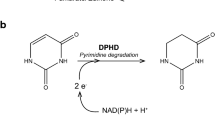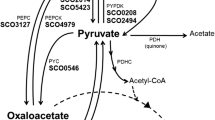Abstract
Seven spontaneous Saccharomyces cerevisiae mutants that express dominant resistance to 5,5,5-trifluoro-DL-leucine have been characterised at the molecular level. The gene responsible for the resistance was cloned from one of the mutants (FSC2.4). Determination of its nucleotide sequence showed that it was an allele of LEU4 (LEU4-1), the gene that encodes α-isopropyl malate synthase I (α-IPM synthase I), and that the mutation involved a codon deletion localised close to the 3′ end of the LEU4 ORF. Six different point mutations – four transitions and two transversions – were found in the remaining mutants. α-IPM synthase activity was found to be insensitive to feedback inhibition by leucine in five of the strains. In the other two the enzyme was resistant to Zn2+-mediated inactivation by Coenzyme A, a previously postulated control mechanism in energy metabolism; as far as we know, this represents the first direct in vivo evidence for this mechanism. The seven mutations define a region, the R-region, involved in both leucine feedback inhibition and in Zn2+-mediated inactivation by CoA. Deletion experiments involving the R-region showed that it is also necessary for enzyme activity.
Similar content being viewed by others
Author information
Authors and Affiliations
Additional information
Received: 30 September 1998 / Accepted: 20 October 1998
Rights and permissions
About this article
Cite this article
Cavalieri, D., Casalone, E., Bendoni, B. et al. Trifluoroleucine resistance and regulation of α-isopropyl malate synthase in Saccharomyces cerevisiae . Mol Gen Genet 261, 152–160 (1999). https://doi.org/10.1007/s004380050952
Issue Date:
DOI: https://doi.org/10.1007/s004380050952




